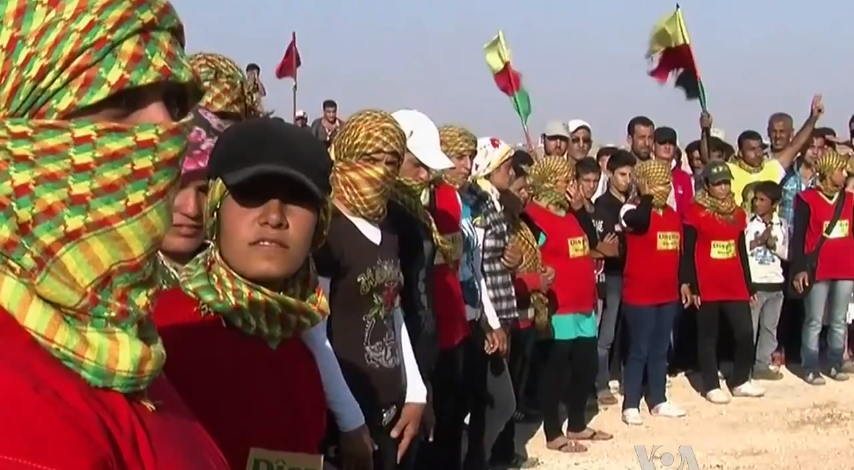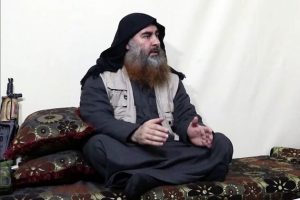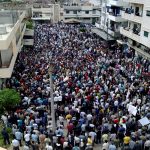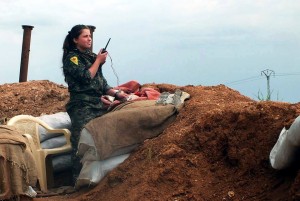by Robert Olson
James Dobbins, Philip Gordon, and Jeffery Martini, ranking members of Rand Corporation and former State Department officials, have authored another study advocating polices that the U.S. should pursue to obtain some kind of peace in Syria. Given the distinguished service that all three authors have rendered, their peace plan for Syria deserves serious consideration.
The authors note that their current peace plan, updated from the one they published in December 2015, recommends that the U.S. should pursue six major actions.
- Prioritize efforts to achieve a national ceasefire, decoupling such a ceasefire from negotiations on a comprehensive political transition.
- Invigorate a diplomatic process that includes all key outside actors including Iran and Saudi Arabia.
- Defer agreement on the divisive issue of Syrian President Bashar al-Assad’s future.
- Establish a mechanism for enforcing the ceasefire based on external guarantors deploying troops in areas friendly to them.
- Allow any and all armed groups, with the exception of UN-designated terrorist groups (for example, the Islamic State (ISIS or IS) and Jabhat al-Nusra) to opt into the cease fire.
- Devolve local authority to the internal factions—the regime, opposition, and Kurdish forces—in their respective areas of control, while continuing military efforts against IS in areas that it holds.
They then assert that “progress has been made along several fronts” five months after their first proposal and itemize those achievements. Finally, they list four options to secure further progress in addressing the civil war.
Option 1: Decentralization Lite
Option 2: Institutionalized Local Control
Option 3: Asymmetric Decentralization
Option 4: Symmetric Decentralization
All four options speak for themselves and have validity. Here, I address option three in so far as it addresses primarily the issue of Syrian Kurds and the role that the Democratic Union Party (PYD), its armed People’s Protective Units (YPG), and the Syrian Democratic Forces (SDF). The SDF is a force of around 35,000 comprised of 30,000 Kurds and 5,000 Arabs as well as some Assyrians and Armenians.
Decentralization and the Kurds
Option three argues for asymmetric decentralization, which the authors state could be combined with the other three options. Although addressing the issue of autonomy for Kurds in Syria, this option doesn’t specify which Kurds. There is no mention of the PYD or the YPG, which have been the leading Kurdish nationalist forces demanding autonomy. They have indeed achieved this autonomy in three regions–Jazira, Kobane, and Afrin. Jazira and and Kobane are now connected and stretch some 250 miles along the Syria-Turkey border. The YPG is the main force attempting to conquer Manbij from the Islamic State (IS).
The authors state, “The most obvious scenario would be if the Kurdish cantons of Afrin, Jazira, and Kobane, which have just declared themselves a federation, are granted a measure of autonomy, while the rest of Syria would operate under central government control.” The difficulty with this passage is that the PYD has already declared autonomy in the three regions. It does not need the members of the U.S.-led peace plan to grant it.
The plan proposes, “The distinguishing feature of this arrangement would be its symmetry in that Syrian Kurds would enjoy autonomy that is not extended to (or, at this point, sought by) other groups, such as the mainly Sunni-Arab opposition or the Druze community concentrated in as-Suwayda.”
While this is one of the more likely scenarios, given its alignment with the situation on the ground, it is also one of the most controversial. With the exception of the Kurdish Democratic Party, which has demanded autonomy, such an arrangement is rejected by the regime, mainly Sunni-Arab opposition, Turkey and regional states that fear its precedent-setting implications for their own ethnic minorities. On the other hand, absent the regime’s ability to field a greatly enhanced military capability or Turkish intervention to stop it, it is not clear how the Kurdish progress toward autonomy can be reversed.
The distinguishing feature of the Dobbins, Gordon, and Martini proposal is that it still assumes a fairly strong central state. Whatever groups do come to power eventually in Syria, especially if they are comprised largely of Sunni Arabs, they will likely allow as little autonomy as possible for non-Sunnis. They may acquiesce for some years as a result of outsiders’ pressures, but they will be only marginally tolerant of non-Sunnis and/or Kurds.
The Role of Turkey
As for the potential reversal of Kurdish autonomy,” which the authors doubt, Turkey could indeed intervene in Syria for just that reason. And they can do so without necessarily sending troops into Rojava by the use of aircraft, long-rang artillery, and drones. Recent developments in southeast Turkey and within Turkey itself—especially the policies and tactics of the Justice and Development Party (AKP) led by Recep Tayyip Erdogan, and his increasingly dictatorial policies— indicate Turkey’s intention to destroy and/or emasculate the Kurdistan Workers’ Party (PKK) and its political arm, the Union of Kurdistan Communities (KCK), to the point that they will no longer be viable Kurdish nationalist organizations. The PKK/KCK will become even weaker if the government is able to prosecute the MPs of the Peoples’ Democratic Party (HDP), barring them from sitting in parliament. A new constitution and a shift to a presidential system would also expedite the AKP’s goal.
The weakening of the PKK/KCK and the HDP would render them unable to help the PYD or the YPG, leaving them vulnerable to outright military actions by Turkey. They would also be at the mercy of the Sunni-dominated “decentralized central government” advocated by Dobbins, Gordon, and Martini as well other hostile Kurdish forces. The authors imply that the U.S. should support their plan in spite of the dangers it poses to any future hopes for Kurdish autonomy in the Turkish southeast and, because of the military role the PKK plays in Rojava, in the Syrian north as well.
The U.S. and EU consider the PKK/KCK as terrorist organizations; Turkey considers both the PKK/YPG as terrorist organizations. Neither the U.S. or EU raised a fuss when Turkey’s armed forces wreaked devastation on the southeast, using disproportionate force, nationalizing large swaths of the cities and towns, and ethnically cleansing several thousand people.
This destruction took place along Turkey’s border with Syria in order to compromise whatever autonomy the PYD and the Kurds of Syria have managed to secure. Turkey wants to ensure that this weakened region becomes increasingly dependent on the Kurdish Regional Government, especially the Kurdish Democratic Party led by Massoud Barzani, which maintains close ties to Turkey and the U.S. If an “asymmetric decentralized” regime eventually emerges in Syria, the currently autonomous Rojava would be dependent on Damascus as well, which would suit Turkey just fine.
Photo: PYD supporters





